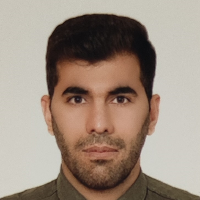Determining the components of physical resilience in the residential texture of Bojnourd City using Moran’s I spatial autocorrelation
Today, cities and residential societies are mainly established where they are subject to different types of natural disasters or are subject to different man-made disasters due to technological advancements. Hence, one of the most important requirements is addressing the physical issues of urban residential textures and the concept of resilience and consequently, retrofitting these textures in case of possible incidents and hazards. The currently studied domain was the residential texture of Bojnourd County with a total population of 233810, with 34557 residential buildings and a total area of 7859902 m2. This study is an applied research in terms of objective and in terms of methodology, it is a descriptive-analytical research based on physical-structural approaches. In order to obtain the objectives of this research, selected indices such as the structural skeleton, materials, the number of floors, gradation, building age, and the quality of buildings were extracted. In order to determine the trends of the patterns, the regression tool was used. Also, for weighting of the layers in the spatial data, the spatial autocorrelation tool of Weights Manager, available in Geoda software, is utilized. Moran’s I tool is used for determining the type of physical resilience distribution (clustered, random, and sparse). Furthermore, Anselin Local Morans spatial autocorrelation tool in ArcGIS software was used for studying the spatial distribution of the residential texture resilience prioritization. The spatial results in the current study shows that 2235783 m2 i.e. 28.45% of the total area including 10187 residential blocks are in the relatively low to very low resilience range and 3513732 m2 i.e. 44.70 of the total area including 15269 residential blocks are in the medium resilience range which require immediate planning. Finally, based on the findings of this research and within the framework of the six selected components, suggestions are made on the physical resilience of the residential texture of Bojnourd County.
One of the problems that have always threatened the lives of human societies over many centuries is the occurrence of disasters and disasters that, if unaware and unprepared, cause irreparable damage to various aspects of human life, including social, economic, Imports the environment, psychology, etc. Today, due to the rapid change of cities, part of the urban fabric due to inefficiency have failed to establish a proper relationship with their environment and service to the users. In the meantime, threats such as the existence of hazards, the mismatch of tissues with present-day needs, as well as the wear and tear of these urban tissues, and in particular residential tissues, have been threatened, hence one of the most important requirements for addressing the physical problems of tissues. Residential in cities and explaining the concept of resilience and consequently the resilience of these tissues in the face of potential accidents and hazards. Today, there is a dramatic shift in attitude towards residential contexts worldwide, with the dominant focus being on reducing vulnerability to increasing resilience to any risk. This paradigm with multidisciplinary approach and twist planning It utilizes ecosystems to increase the capacity of ecological systems to absorb disturbances and to maintain the necessary feedback, processes, and inherent structures of the system.The main problem of cities in Iran, which has always driven urban planners and officials, is the physical decline and problematic urban texture or poor texture in the urban space and the adverse effects of non-compliance with resilience principles in urban areas. This field can be upgraded. Bojnourd, as an emerging metropolis, suffers from undesirable textures, influenced by development factors such as the establishment of industries, particularly heavy industries, and the acceptance of immigrant floods, as well as the temporal incompatibility of urban textures with existing needs. Considering the special status of Bojnourd metropolis and its importance in social and cultural dimensions among the cities of eastern Iran and its highs and lows and its importance at national level, its study as a city has a history of resilience. It is very important.
This study is an applied research in terms of objective and in terms of methodology, it is a descriptive-analytical research based on physical-structural approaches. In order to obtain the objectives of this research, selected indices such as the structural skeleton, materials, the number of floors, gradation, building age, and the quality of buildings were extracted. In order to determine the trends of the patterns, the regression tool was used. Also, for weighting of the layers in the spatial data, the spatial autocorrelation tool of Weights Manager, available in Geoda software, is utilized. Moran’s I tool is used for determining the type of physical resilience distribution (clustered, random, and sparse). Furthermore, Anselin Local Morans spatial autocorrelation tool in ArcGIS software was used for studying the spatial distribution of the residential texture resilience prioritization.
To analyze the map of the resilience indices, after determining the status quo and categorizing each index based on the degree of resilience (high resilience to non-reflux), vectors were presented based on spatial representation. Examination of the building skeleton in the study area shows that about 40% have no skeleton, 31% steel and 28% concrete. Examination of the number of building floors in the study shows that of the existing buildings, about 74% are single storeys, 20% are two storeys, about 4% are three floors, and about 2% are four and more than four floors. The quality of the buildings has been evaluated based on five criteria: new, acceptable, repairs, demolition and lack of quality; Relatively high-rise buildings in this area, especially in the central areas of tissue, have complied with the lack of standards in recent construction due to the inability of residents to settle and mainly in the marginal areas. Also the criteria for renovating, accepting, demolishing and lacking quality include 31.54%, 28.27% and 4.54% of the existing buildings in the study area, respectively. In this paper, the size of the disaggregated fragments, the area of the studied fragments are classified into four classes of less than 100 m 2, 100 m 2 to 200 m 2, 200 m to 300 m 2 and more than 300 m 2, each of which 2.99%, 28.36%, 32.84% and 35.80% of the study area were included. The status of the materials used in the buildings under study was 31.54%, brick and cement 28.27%, cement block 35.69% and brick 4.58%, respectively. Surveying the life expectancy and age of existing buildings in the study area shows about 40% more than 30 years, 31% less than 10 years, 28% between 20 and 30 years, and less than 1% between 10 and 20 years.
In the present study, after extraction of physical resilience indices of residential texture in Bojnourd, the regression tool was used to detect pattern trends, and spatial autocorrelation method was used to weight the layers in spatial data. Moran's I tool was used to determine the physical resilience distribution of residential texture (cluster, random, and dispersed). Also, the spatial distribution of resilience indices in residential texture was used by the Anselin Local Morans method and texture preferences were extracted with respect to the existing spatial and spatial relationships and priorities were determined at very high to very low resilience levels. Physical resilience of residential texture of Bojnourd city was categorized into five spectra, among which the average resilience with the highest percentage (70/44 which covers 3513732 sqm of residential texture of Bojnourd) was 1763787 sqm or 22.44% of the total area. Residential texture in very low resiliency which needs to be programmed for these parts of the tissue as soon as possible, 1701504 m 2 (21.65%) Residential texture in high resiliency, 471996 m 2 (6.1%) Low yields and 408883sq m (5.20%) are in high recovery condition.
resilience , physical , residential , ALM , Bojnourd
-
Analysis of the physical resilience of oil-rich cities against earthquakes(Case study: Dogonbadan city)
Masoud Zafari, Keramat Allah Ziyari *, Saeed Zanganeh Shahraki, Seysd Abbas Rajaei
Quarterly of Geography (Regional Planing), -
بررسی تاثیر تحولات مکانی و زمانی در رشد و گسترش شهرنشینی در غرب کشور بر پایداری و تاب آوری زنجیره تامین دفاعی ج.ا.ایران
حامد هواسی*، سید مرتضی احمدی،
نشریه آماد و فناوری دفاعی، زمستان 1403 -
Measuring urban resilience against flood risk using composite indicators: a Case Study of Khorramabad city)
, Saeed Zanganeh Shahraki *, Hossein Hataminejad, Ahmad Pourahmad, Mohammd Salmani
Motaleate Shahri, -
ssessment component of urban resilience against natural shocks (Case Study: Cirrus neighborhood District 12 of Tehran)
, Esmaeil Najafi, Maryam Beyranvandzadeh *, Alireza Sadeghi
Quarterly of Geography (Regional Planing),



